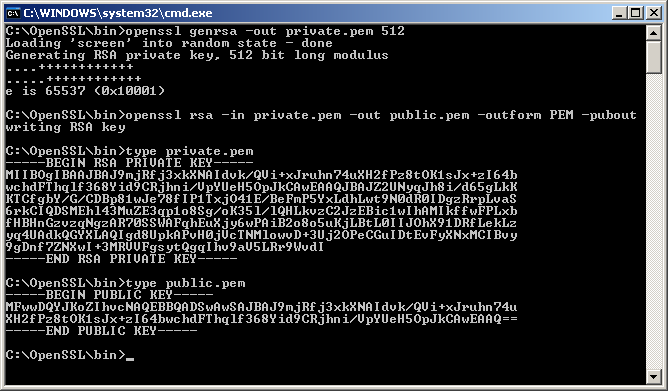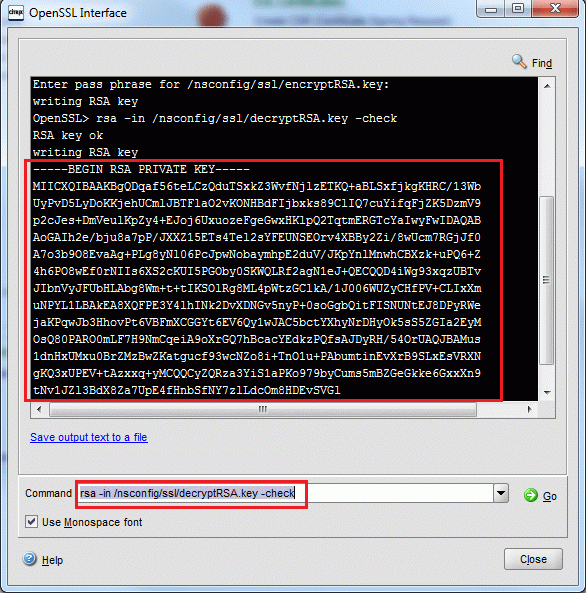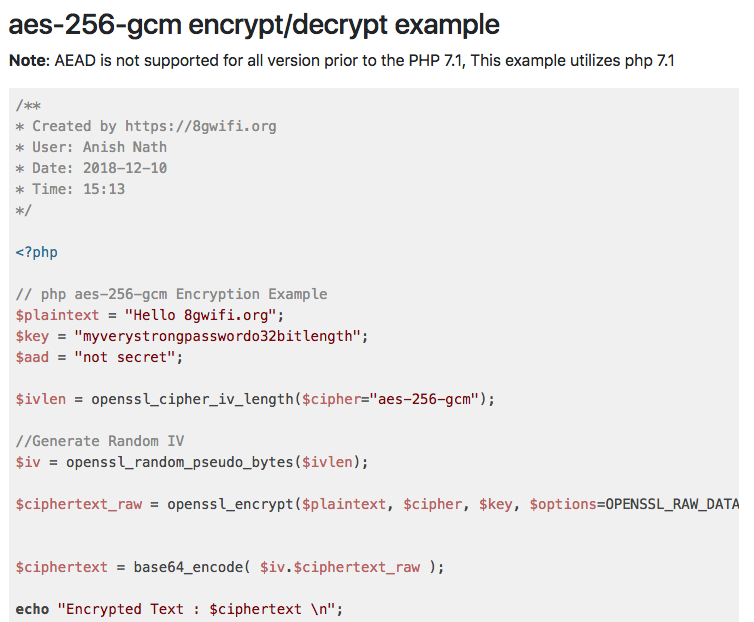This post briefly describes how to utilise AES to encrypt and decrypt files with OpenSSL.
AES - Advanced Encryption Standard (also known as Rijndael).
- Each utility is easily broken down via the first argument of openssl. For instance, to generate an RSA key, the command to use will be openssl genpkey. Generate 2048-bit AES-256 Encrypted RSA Private Key.pem. The following command will result in an output file of private.pem in which will be a private RSA key in the PEM format.
- This video describe how to generate an RSA private key and certification x509 to be used in Wakansa, to secure communication.
Openssl Generate Aes Key Base64 - energyinfinity. Aes Key Generator. Openssl Encrypt Private Key File. The openssl program provides a rich variety of commands, each of which often has a wealth of options and arguments. Many commands use an external configuration file for some or all of their arguments and have a -config option.
OpenSSL - Cryptography and SSL/TLS Toolkit

We’ll walk through the following steps:
- Generate an AES key plus Initialization vector (iv) with
openssland - how to encode/decode a file with the generated key/iv pair
Note: AES is a symmetric-key algorithm which means it uses the same key during encryption/decryption.
Generating key/iv pair
We want to generate a 256-bit key and use Cipher Block Chaining (CBC).
The basic command to use is openssl enc plus some options:
-P— Print out the salt, key and IV used, then exit-k <secret>or-pass pass:<secret>— to specify the password to use-aes-256-cbc— the cipher name
Note: We decided to use no salt to keep the example simple.

Issue openssl enc --help for more details and options (e.g. other ciphernames, how to specify a salt, …).
Encoding
Let's start with encoding Hello, AES! contained in the text file message.txt:

Decoding
Decoding is almost the same command line - just an additional -d for decrypting:
Note: Beware of the line breaks
While working with AES encryption I encountered the situation where the encoder sometimes produces base 64 encoded data with or without line breaks...
Short answer: Yes, use the OpenSSL -A option.
This post briefly describes how to utilise AES to encrypt and decrypt files with OpenSSL.
AES - Advanced Encryption Standard (also known as Rijndael).
OpenSSL - Cryptography and SSL/TLS Toolkit
We’ll walk through the following steps:
- Generate an AES key plus Initialization vector (iv) with
openssland - how to encode/decode a file with the generated key/iv pair
Note: AES is a symmetric-key algorithm which means it uses the same key during encryption/decryption.
Generating key/iv pair
We want to generate a 256-bit key and use Cipher Block Chaining (CBC).
The basic command to use is openssl enc plus some options:
-P— Print out the salt, key and IV used, then exit-k <secret>or-pass pass:<secret>— to specify the password to use-aes-256-cbc— the cipher name
Note: We decided to use no salt to keep the example simple.
Issue openssl enc --help for more details and options (e.g. other ciphernames, how to specify a salt, …).
Encoding
Aes 256 Java
Let's start with encoding Hello, AES! contained in the text file message.txt:
Decoding
Decoding is almost the same command line - just an additional -d for decrypting:
Note: Beware of the line breaks
While working with AES encryption I encountered the situation where the encoder sometimes produces base 64 encoded data with or without line breaks...


Aes 256 Software
Short answer: Yes, use the OpenSSL -A option.